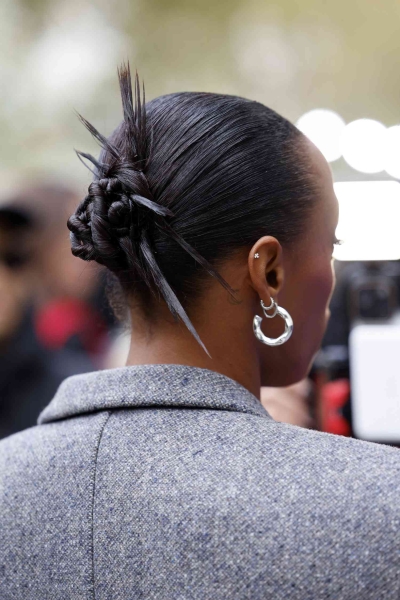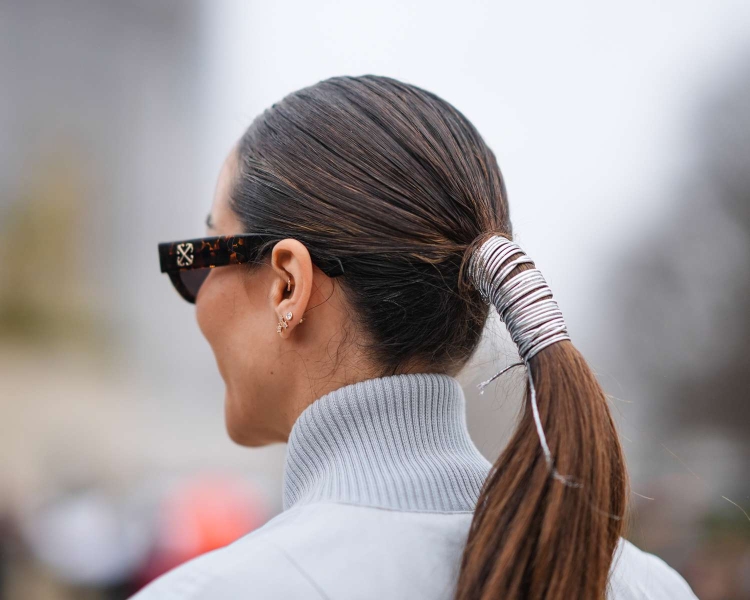Contents
- 1 9 Reasons Your Hair Is Oily
- 1.1 You overwash your strands.
- 1.2 You don’t wash your hair enough.
- 1.3 You’re using the wrong products for your hair type.
- 1.4 You touch your hair frequently.
- 1.5 You work out a lot.
- 1.6 Where you live doesn’t jive with your hair type.
- 1.7 Your hormones are out of whack.
- 1.8 You might have a scalp condition.
- 1.9 It could be genetic.
- 2 What to Do
As any fine-haired girly knows, even freshly washed strands can look weighed down if not properly tended to. And let’s be honest: It’s so, so frustrating. So if you’ve ever wondered why your hair gets oily so fast (or at least looks it), you’re in the right place. We chatted with a few hair pros to uncover the top reasons why hair looks oily—and what to do about it.
Meet the expert
- Gloria Lin, MD, FAAD, is a board-certified dermatologist at Schweiger Dermatology Group in New York City. Gretchen Friese is a BosleyMD trichologist and the Salon Director at Foushee Salon Spa in Littleton, Colorado. Iris Rubin, MD, is a Harvard-trained dermatologist and the founder of SEEN.
Keep reading to uncover what you might be doing to affect your hair’s appearance, and what you should do instead.
9 Reasons Your Hair Is Oily
You overwash your strands.
This might seem counterintuitive but the more you wash your hair, the oilier it can become. “Overwashing your hair can actually strip too much of the natural oils of the scalp; The skin will try to compensate for this by causing overproduction of oil,” says board-certified dermatologist Dr. Gloria Lin.
You don’t wash your hair enough.
Achieving grease-free strands really boils down to a Goldi Locks-approach with washing. After all, as Dr. Lin points out, underwashing your hair can also cause it to look oily. “Every hair type is different, so it may take some trial and error to figure out the correct routine for each individual,” she admits.
The problem with under-washing is that styling products and grease-absorbing products like dry shampoo can build up, and build-up can lead to oily roots. “Product buildup is one of the most common causes of oily hair,” says board-certified dermatologist Dr. Iris Ruben.
You’re using the wrong products for your hair type.
How often you wash your hair isn’t the only thing you need to think about when hopping in the shower. The products you use are important, too. “Hair products that are not appropriate for your hair type can cause build-up in the scalp and lead to trapped oil,” Dr. Lin warns. “Using hair products incorrectly can also lead to problems. For example, the conditioner should be used from the middle of the hair shaft to the ends of the hair. Using it on the scalp can actually cause it to be more oily—the roots do not typically need the conditioner because the natural oils from the scalp will do that.”
You touch your hair frequently.
If your washing routine isn’t the culprit, your hands may be. “Touching your hair can transfer oil and dirt from the hands to your hair making it more oily,” Dr. Lin says. “Similarly, not cleaning out your combs or brushes regularly can cause oil, dirt, and product build-up that can then be transferred to the hair.” Dr. Lin says that this principle applies to any item that may regularly come in contact with your hair. Think: hats, headbands, pillowcases, and so on. “These can collect things like sweat, oil, makeup, and skincare products that can then also be transferred to the hair,” she explains.
You work out a lot.
There’s nothing like a solid sweat sesh to start the day. If you don’t have time to wash your hair post-workout, though, oily roots could be the result. “When sweat mixes with the sebum in your scalp, it becomes oily faster,” trichologist Gretchen Friese points out.
Where you live doesn’t jive with your hair type.
Your environment can also affect how oily your hair looks. “Living in a warmer or more humid climate can increase the tendency for a more oily scalp,” Dr. Lin reveals. “Air pollution, especially in urban areas, can also cause increased dirt and oil build-up in the hair.”
Your hormones are out of whack.
Meanwhile, if your environment, hygiene, and haircare routine are all tailored for healthy-looking hair, your hormones may be to blame. “Fluctuating hormones [such as during puberty or pregnancy] can cause increased oil production including on the scalp,” Dr. Lin says. “Diet may also affect the hormone levels, which can then also cause increased sebum production.” The same goes for high levels of stress.
You might have a scalp condition.
Just as your facial complexion can experience conditions that cause fluctuations in oil products, so can your scalp. “Certain medical conditions like seborrheic dermatitis or dandruff can contribute to an oily scalp and be made worse by the excess sebum production,” Dr. Lin says.
It could be genetic.
Lastly, oily roots could simply run in the family. “Some people are just born with more oil producing glands,” Friese says.
Keep in mind, if you have fine hair, it doesn’t necessarily mean that you have more oil-producing glands. Less hair just makes any oil more visible. “For those with fine hair, oil may be more visible on their scalp than those with thicker hair,” Dr. Rubin confirms.

What to Do
Stop overwashing the hair.
When trying to self-diagnose the cause of oily hair, the first step should be in the shower. Are you shampooing your hair daily? If so, you might want to cool it. “Initially, it may be difficult as the hair will be greasy as it takes time for the scalp to readjust; However, over time, [the scalp] will produce less oil and allow for longer time between washes,” Dr. Lin says.
Of course, you don’t want to only wash your hair once a week if you’re struggling with oily strands. “Washing too often can stimulate the sebaceous glands causing them to produce more oil; Not washing enough can cause build-up on the scalp and make the hair more oily,” Friese reminds us.
With that in mind, both Friese and Dr. Lin recommend experimenting with your washing routine to find that sweet spot.
Avoid touching your hair.
If touching your hair makes it look more oily the obvious move is to keep your paws off. Of course, this can be difficult to do if you have a strong habit of brushing your hair out of your face. One way to prevent yourself from feeling the need to do so is by wearing a headband or clipping your face-framing strands back.
If you feel the need to touch your hair, Dr. Lin says to consider doing so with a blotting sheet. “The blotting sheets that people use on their face to help remove sebum can also be used on the hair to absorb grease,” she shares. “If you are someone who tends to touch their hair a lot, then only touching the hair with the blotting sheets may satisfy your need to touch the hair without adding additional oils.”
Regularly clean your brushes and combs.
The same way products can build up on your scalp, they can accumulate on your brushes and combs, too. With that in mind, make sure to regularly de-hair your tools and consider giving them a deep clean with soap and water once a month.
Those stubborn little lint balls that seem impossible to remove from brush bristles will slip right off if you soak your brushes in warm water and Dawn soap.
On the topic of hygiene, Dr. Lin says to also prioritize regularly washing hats and swapping out pillowcases—once a week is ideal.
Choose products that are appropriate for your hair type.
It’s important to remember that not all hair types can tolerate all haircare ingredients.
“For fine hair, avoid products that are too heavy or rich as this can cause the hair to look greasy and weigh it down,” Dr. Lin says. “Avoid using too much conditioner or hair styling products as this can also cause build-up.”
Products that all oil-prone hair types can benefit from? Scalp-specific shampoos. “Shampoos formulated for oily hair can help to reduce excess oil production,” Dr. Rubin says. When looking for such products, keep an eye out for ingredients like salicylic acid and charcoal, both of which can help rebalance the scalp.
Meanwhile, if you have a medical condition like seborrheic dermatitis, Dr. Lin says to use an anti-dandruff shampoo to help curb the build-up.
